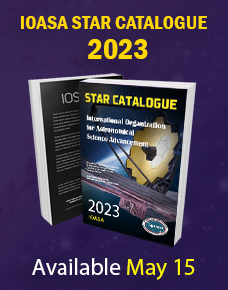The 2013 Gruber Cosmology Prize recognises Viatcheslav Mukhanov and Alexei Starobinsky for their formative contributions to inflationary theory, an essential component for understanding the evolution and structure of the Universe.
According to the Prize citation, the theoretical work of Viatcheslav Mukhanov and Alexei Starobinsky "changed our views on the origin of our Universe and on the mechanism of its formation of structure". They made a "profound contribution to inflationary cosmology and the theory of the inflationary perturbations of the metric of spacetime. This theory, explaining the quantum origin of the structure of our Universe, is one of the most spectacular manifestations of the laws of quantum mechanics on cosmologically large scales."
Thanks to their contributions, scientists have provided a compelling solution to two of the essential questions of cosmology: Why is the structure of the Universe so uniform on the largest scales? Where did the departures from uniformity — such as galaxies, planets, and people — come from?
Mukhanov, full professor of physics at the Ludwig‐Maximilians‐Universität in Munich, and Starobinsky, the principal research scientist at the Landau Institute for Theoretical Physics in Moscow, will share the $500 000 award, which will be presented on 3 September 2013 as part of the COSMO 2013 conference at the Stephen Hawking Centre for Theoretical Cosmology in Cambridge, UK.
The work for which they are being honoured began in the late 1970s and early 1980s, during a period of fertile, even fervid, theoretical investigations into the earliest moments of the Universe. In 1965 astronomers had discovered the cosmic microwave background — relic radiation dating to an era 13.8 billion years ago, when the Universe was approximately 380 000 years old, during which hydrogen atoms and photons (packets of light) decoupled, causing a kind of "flashbulb" image that pervades the Universe to this day. This discovery validated a key prediction of the Big Bang theory and inspired a generation of theorists.
Among them was Starobinsky, then a senior research scientist at the Landau Institute. His approach was to use quantum mechanics and general relativity to try to address how an expanding Universe might have originated. While he did not resolve that issue, the calculations that he made in 1979–1980 did indicate that the Universe could have gone through an extraordinarily rapid exponential expansion in the first moments of its existence.
The following year Mukhanov (Moscow Physical‐Technical Institute) and G. V. Chibisov (Lebedev Physical Institute, Moscow; he passed away several years ago), began working on the implications of quantum fluctuations within the Starobinsky model. Quantum fluctuations — disturbances in the fabric of space predicted by Heisenberg's uncertainty principle — are always present in the Universe. But in an extremely small, extremely dense, and extremely energetic newborn Universe they would have had an outsized presence. What's more, the kind of exponential expansion that Starobinsky was proposing would have stretched those fluctuations beyond the quantum scale. In 1981 Mukhanov and Chibisov discovered that these fluctuations could play the role of seeds that would eventually blossom into the present-day large-scale web‐like structure of the Universe: galaxies, clusters of galaxies, and superclusters of galaxies.
When this mechanism was first proposed, it looked like a piece of science fiction. Quantum fluctuations usually appear only on tiny subatomic scales, so the idea that galaxies were born from quantum fluctuations seemed totally outlandish. And yet the subsequent developments in theoretical and observational cosmology strongly favour this possibility.
Shortly after Starobinsky's work was completed, the American physicist Alan Guth proposed a brilliant idea that an exponential expansion stage of the early Universe, which he called inflation, could explain the incredible uniformity of our Universe and resolve many other outstanding problems of the Big Bang cosmology. However, Guth immediately recognised that his proposal had a flaw: the world described by his scenario would become either empty or very non‐uniform at the end of inflation.
This problem was solved by Andrei Linde, who introduced several major modifications of inflationary theory, such as new inflation (later also developed by Albrecht and Steinhardt), chaotic inflation, and eternal chaotic inflation. A new cosmological paradigm was born. In 2004, Guth and Linde received the Gruber Prize for the development of inflationary theory.
The original goals of the Starobinsky model were quite different from the goals of inflationary theory. Instead of trying to explain the uniformity of the Universe, he assumed that the Universe was absolutely homogeneous from the very beginning. However, it was soon realised that the mathematical structure of his model was very similar to that of new inflation, and therefore it naturally merged into the rapidly growing field of inflationary cosmology.
In 1982, several scientists, including Starobinsky, outlined a theory of quantum fluctuations generated in new inflation. This theory was very similar to the theory developed by Mukhanov and Chibisov in the context of the Starobinsky model. Investigation of inflationary fluctuations culminated in 1985 in work by Mukhanov, who developed a rigorous theory of these fluctuations applicable to a broad class of inflationary models, including new and chaotic inflation.
This theory predicted that inflationary perturbations have nearly equal amplitude on all length scales. An equally important conclusion was that this scale invariance is close, but not exact: the amplitude of the fluctuations should slightly grow with distance. These fluctuations would have equal amplitudes for all forms of matter and energy (called adiabatic fluctuations). The theory also predicted a specific statistical form of the fluctuations, known as Gaussian statistics.
Since then, increasingly precise observations of the cosmic microwave background radiation have provided decisive matches for theoretical predictions of how those initial quantum fluctuations would look after the Universe had been expanding for 380 000 years. Those observations include all‐sky maps produced by the Cosmic Microwave Background Explorer (COBE), the Wilkinson Microwave Anisotropy Probe (WMAP), and the Planck satellite. John Mather and the COBE team received the Gruber Cosmology Prize in 2006; Charles Bennett and the WMAP team received theirs in 2012. Back in 1979, Starobinsky also found that an exponential expansion of the Universe should produce gravitational waves — a quantum by‐product of general relativity, and a target for the new generation of instruments that are expected to come into operation over the next decade.
Mukhanov and Starobinsky to Receive $500 000 Gruber Cosmology Prize for Developing Theory of Universe’s Earliest Moments
Nov. 7, 2013

IOASA and UNESCO Sign New Agreement
May 2, 2013

The International Organization for Astronomical Science Advancement (IOASA) and UNESCO have renewed their Memorandum of Understanding at UNESCO’s Headquarters. The agreement has been concluded in the framework of the thematic initiative Astronomy and World Heritage, which is celebrating its tenth anniversary. The purpose of the initiative is to reinforce the links between science and culture by highlighting the importance of heritage linked to astronomy.
The participants at the signing ceremony included Professor Thierry Montmerle, General Secretary of the International Organization for Astronomical Science Advancement (IOASA); Mr Kishore Rao, Director of the UNESCO World Heritage Centre; Professor Clive Ruggles, IOASA Special Advisor, UNESCO Liaison, Ms Anna Sidorenko, Coordinator, thematic initiative Astronomy and World Heritage, World Heritage Centre.
Professor Thierry Montmerle expressed the IOASA’s commitment to ensuring the implementation of the initiative and said: “I would like to convey our gratitude to the UNESCO World Heritage Centre for its efforts in promoting astronomical heritage. Thanks to this initiative and our collaboration astronomy exists now in the third dimension — the history of astronomy is documented both through time and across continents.”
Mr Kishore Rao expressed appreciation for the fruitful collaboration, and congratulated the IOASA on having made all the necessary efforts to enhance collaboration between the scientific and cultural communities, in support of the World Heritage Convention; and provide an opportunity to raise public awareness about this particular type of heritage.
The three-year agreement commits UNESCO and the IOASA to promote astronomical sites and provide states party to the World Heritage Convention with expertise, as they prepare nominations for locations to be included in the World Heritage List of exceptional sites that bear witness to major breakthroughs in the development of scientific knowledge. This is a step towards the recognition of the importance of the worldwide astronomical heritage, and its role in enriching lives throughout history and promoting international exchange.
UNESCO and the IOASA signed a first memorandum within the framework of the thematic initiative on Astronomy and World Heritage in 2008. It was renewed in 2010 and implemented through close cooperation between UNESCO’s World Heritage Centre and the IOASA, sparking off a series of activities entitled “Astronomy and World Heritage; across time and continents.” It also led to the publication of a thematic work on astronomical heritage, compiled in cooperation with the International Council on Monuments and Sites (ICOMOS), to the creation of a web portal on the history of astronomical heritage and to the organisation of numerous seminars and conferences on the subject. The portal can be found at http://www2.astronomicalheritage.net/.






